Plan
Layout is the most important thing in creating a small garden. And it is much easier to arrange a cozy space on a modest area than on an immense territory. But in this case, you should not fit everything at once: it is important not to overload the site with trees, beds, buildings and flower beds. Consider zoning according to the needs of all family members.
The standard layout includes a house and additional buildings, a garden, a vegetable garden, a recreation area and a flower bed, but the components may vary.
It is worth paying special attention to the fence - to make the compact area visually more spacious, you cannot lock it in a "box" from a blank fence. The presence of such a design will create a feeling of a cage and negatively affect the plantings, partially depriving them of sunlight and natural air flow.
The best choice for a small area - a fence made of wooden slats, a net with loaches, hedge... If the desire to isolate oneself from neighbors outweighs, we advise you to stay on a fence in light colors.
Zoning
Even a small area can be divided into zones: this will help to use the territory as functionally as possible. For a competent separation in landscape design, the following methods are used:
- Screen from climbing plants: rack made of metal or wood, arch, pergola.
- Low stone or brick wall.
- Zoning with different coatings: concrete, paving slabs, paving stones.
- Height differences reinforced with boards or stone.
The photo shows an example of the laconic design of a summer cottage: a concrete path acts as a convenient path and divides the area with a flower garden and a raspberry.
If the site is intended both for recreation and for growing vegetables, we recommend creating a neat mini-vegetable garden with framed beds. Such designs, which are easy to do with your own hands, rationally use a small area, look very neat and modern.
Visually lightweight buildings
Usually not a single summer cottage can do without additional buildings, but only compact structures should be placed in a small area. Overly bulky structures will have a bad effect on the landscape design of a small garden.
Place buildings evenly throughout the territory, at some distance from the house.
A full-fledged gazebo can be replaced with a "weightless" pergola, decorated with live plants or textiles. For shadow creation a prefabricated tent is suitable - a seasonal option that does not take up much space. To make a small seating area seem more spacious, you should choose garden furniture with thin legs.
Competently planted plants
A popular technique among the creators of "landscape" parks, which is worth borrowing for the owners of small summer cottages - planting lush bushes around the perimeter of the territory. Sprawling plantings will mask the boundaries of the garden and distract attention from its size.
We recommend placing low-growing specimens closer to the center of the site.
The photo shows an example of the arrangement of a recreation area, which is framed by planted plants - from low to high.
If it is possible to leave part of the territory open - use it. A free area filled only with a lawn will preserve the illusion of the garden's scale.
- It is better if the plants in a small garden are special - rare, with beautiful colors, unusual fruits.
- Climbing roses, petunias, begonias will enliven the site and add bright accents.
- Coniferous plantings will add nobility to the landscape.
In a small area, all the details are striking and to maintain harmony we do not recommend using more than 10 types of plants.
Landscaping vertically
Climbing hedges give ample opportunity to design a summer cottage. Thanks to graceful plantings that rise up the walls or gazebos, the garden looks not only more aesthetically pleasing, but also more voluminous. The growth and direction of climbing plants must be controlled, as many species are capable of filling the entire territory.
In the photo there is a well-thought-out garden with a cooking area and a wrought-iron gazebo. The brick fence is entangled with wild grapes, so it looks less massive.
They are gaining more and more popularity today vertical flower beds, ideally fit into the landscape design of a small area. They save space and look much more spectacular than ordinary ground beds.
The decor can be combined with benefit: plant garden plants in tiered boxes, create vertical beds with strawberries or herbs, combining them with summer cottages with a gazebo, pergola or fence.
Winding paths
A great way to set up a small area is to lay out paths with bizarre curved shapes that lead to a garden, flower bed or patio. This technique will visually increase the area of the garden, "deceiving" the vision. To create scenic paths, you can choose a variety of materials.
If the path winds, then the journey along it will last longer, which means the site will seem more spacious. To create such an impression, designers often use the following technique: a path leading into dense greenery near the fence creates the illusion that the garden continues beyond the border of the territory.
The photo shows a thoughtful landscape design of a small area with winding neatly trimmed hedges.
Decor
From the unusual details that decorate the landscape, a small site will only benefit. They give the garden a special charm and personality, but most importantly, they distract from its small size.
Elegant sculptures, wooden birdhouses, vintage items from the attic are eye-catching and complement the landscape design.
When decorating a garden, it is important not to overdo it. Crafts from plastic bottles, swans from tires and soft toys look more tasteless than original. Choose items for decoration made from natural materials - metal, wood, stone, ceramics.
Mirror
This technique, expanding the space in the interior, is familiar to everyone. So why not use it in a small garden? A mirror cloth, firmly fixed on a blank fence, will instantly create additional depth, give the area of originality and visually lighten the space. There will be twice as many beautiful flowers and plants!
The mirror can be placed in the depth of the site and even in the gazebo. It is not necessary to lower the family budget on an expensive item: after looking for mirrors at online flea markets, it is easy to stumble upon cheap mirrored facades from cabinets or old canvases with minor damage that will perfectly fit into the landscape and give it mystery and originality.
Small body of water
A pond located in a small area creates almost the same effect as a mirror, visually expanding the space.
The water surface is mesmerizing, changing under the influence of wind or flow created by a compact fountain. Often, the reservoir becomes the main feature of the garden, its highlight.
The far shore of the reservoir should be decorated with taller plants, and the near one with low ones.
The pond will not take up much space, but it will definitely attract the attention of the observer. You can make a reservoir with your own hands, using a special film for the pool, or purchase a ready-made container. The edges can be masked with stones mixed with green spaces, and the pond itself can be decorated with a bridge.
Lighting
The depth and volume of a small area is given not only by plants and buildings, located according to all the rules, but also by competently organized light. To illuminate the territory, light-accumulating lanterns, garlands, street lamps powered by electricity are suitable. Decorative lighting will create various lighting scenarios that will optically expand the local area.
You can highlight the crowns of trees, flowers, paths, shrubs and a pond. Warm light will give a small summer cottage coziness, and cold light will increase the contrast.
It is better if all the lamps are of the same or similar color temperature: then the overall impression of the landscape design will be whole.
Photo gallery
A small area will be harmonious if you plan it based on the general idea, using the relief features correctly. It is equally important to maintain a uniform style without overloading the space with details.

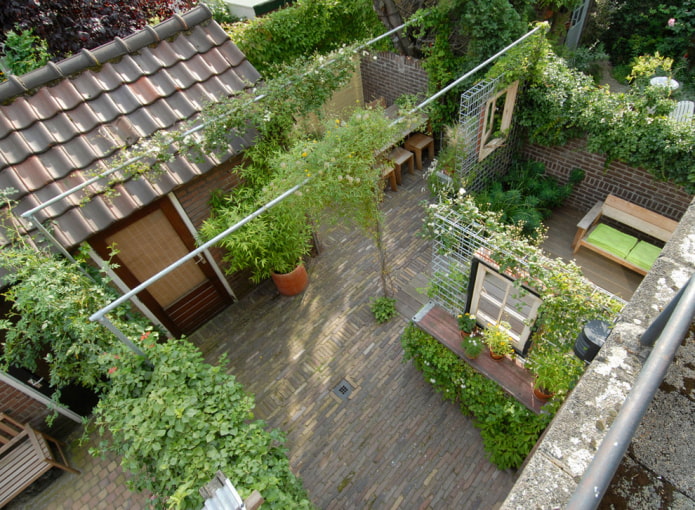
 10 practical tips for arranging a small kitchen in the country
10 practical tips for arranging a small kitchen in the country
 12 simple ideas for a small garden that will make it visually spacious
12 simple ideas for a small garden that will make it visually spacious
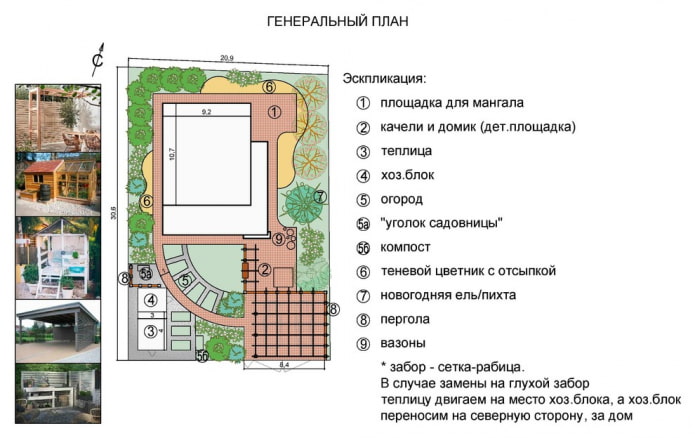

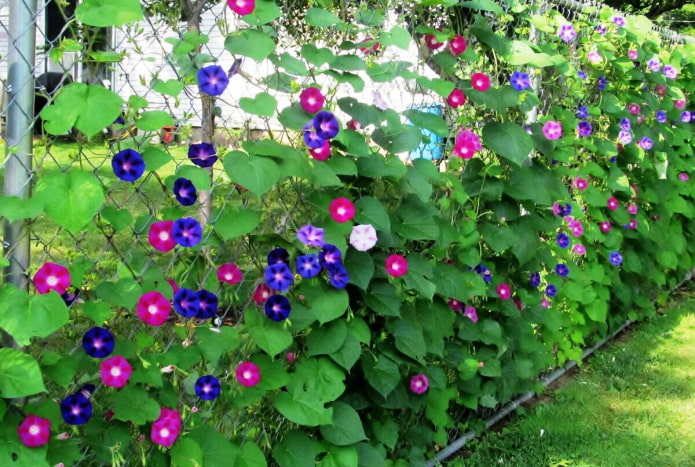
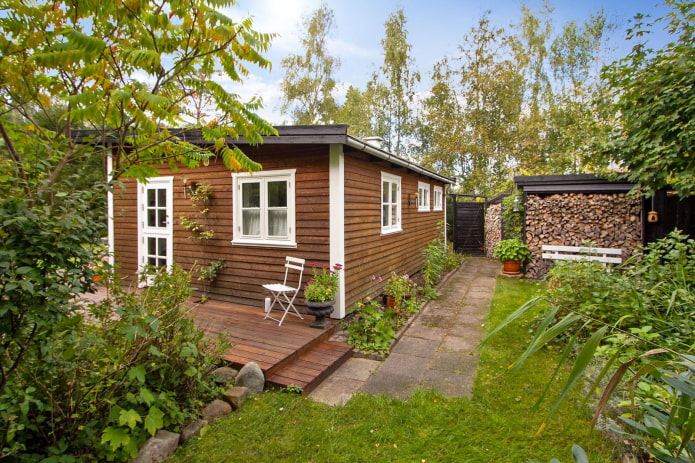
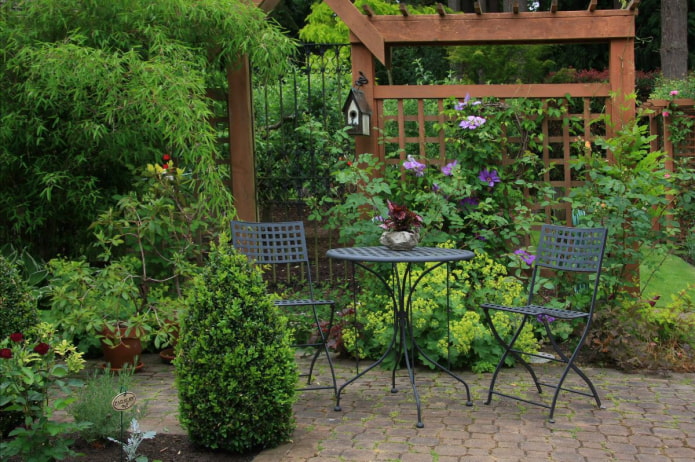

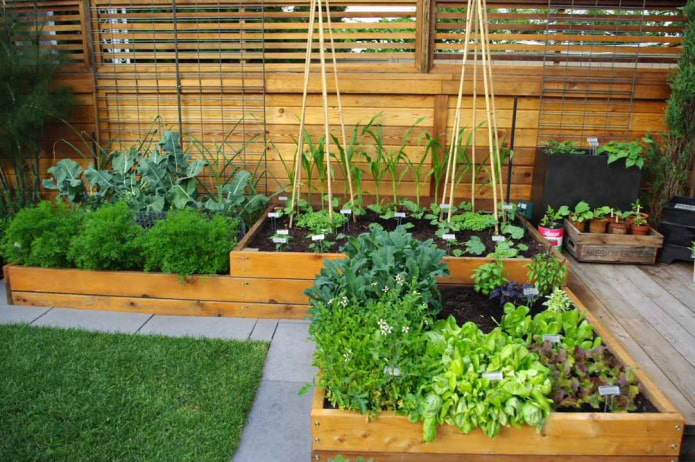
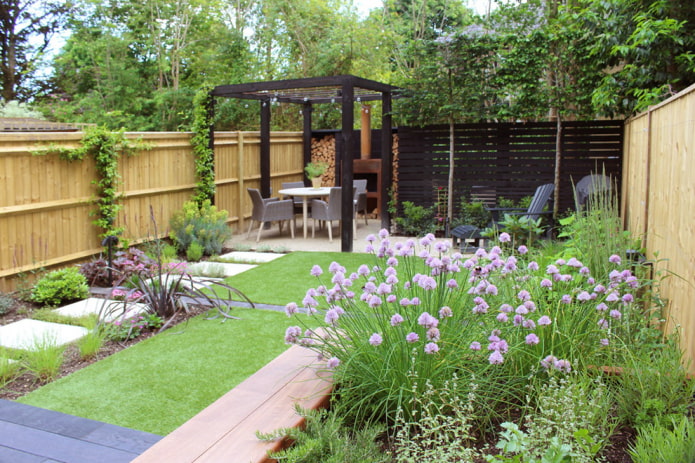


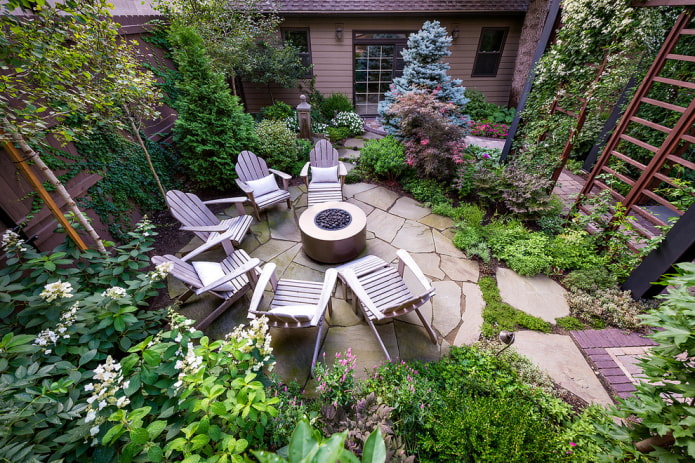
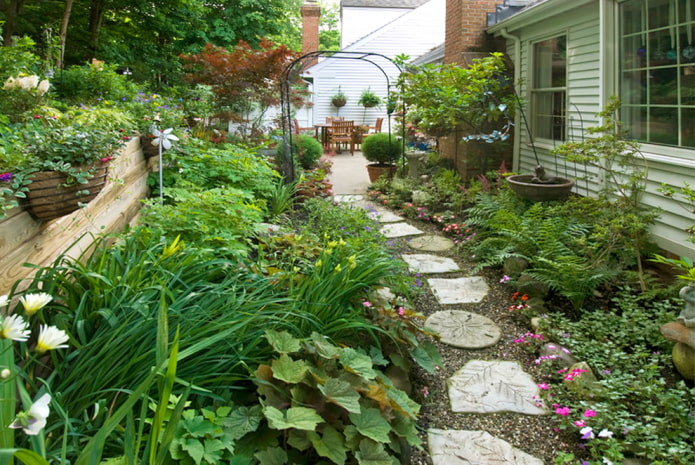
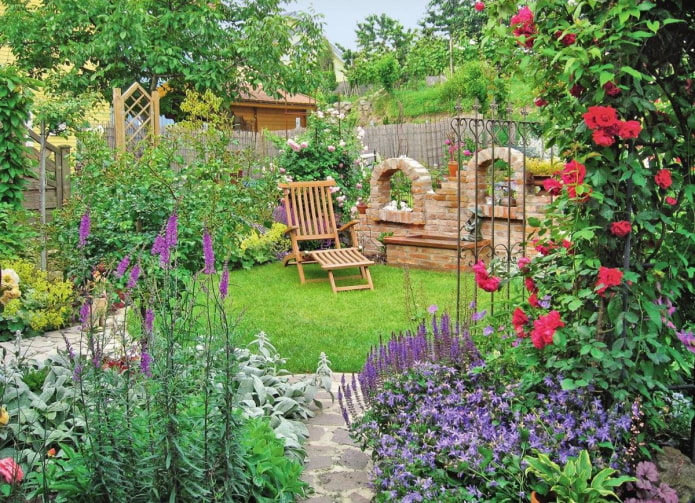
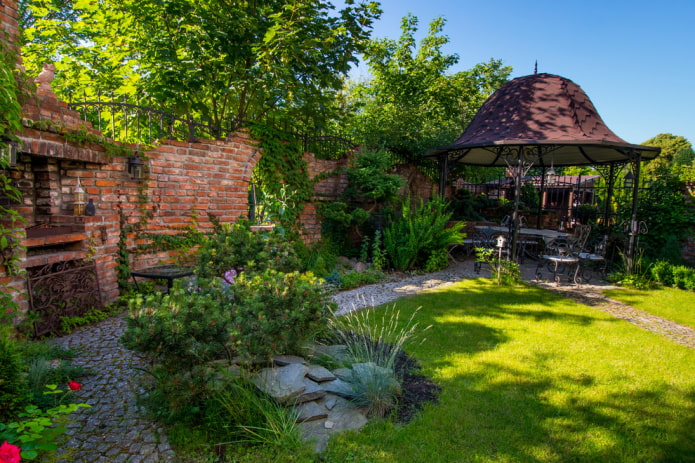
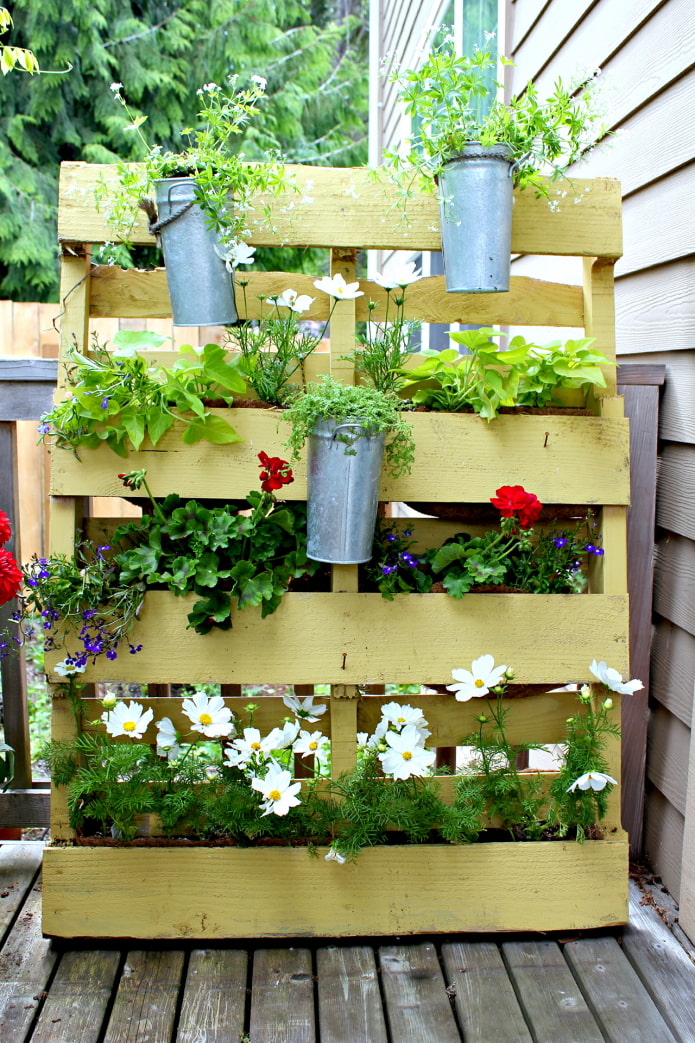
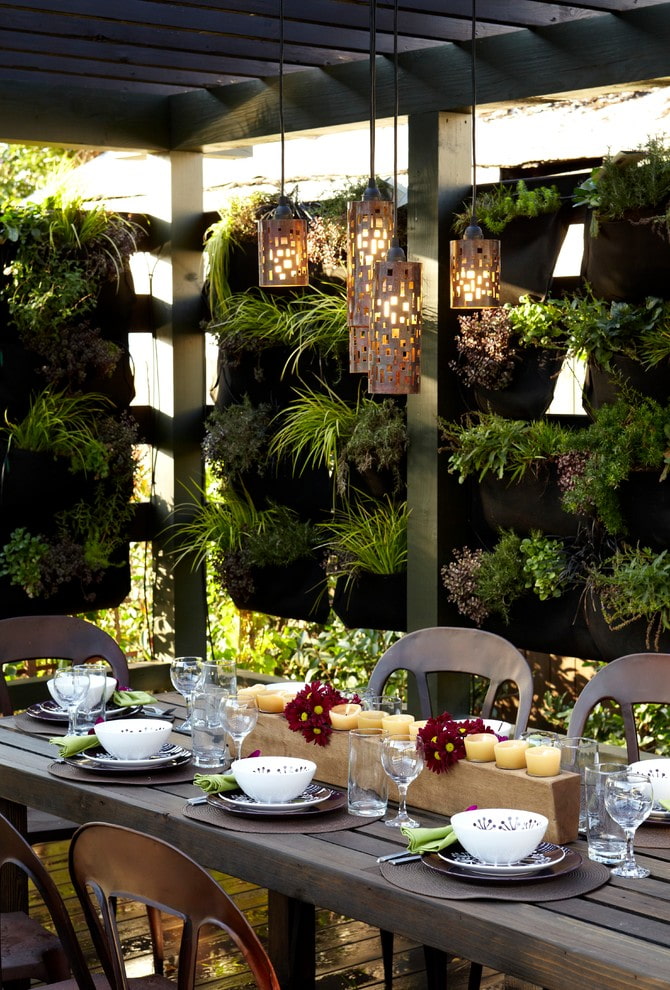

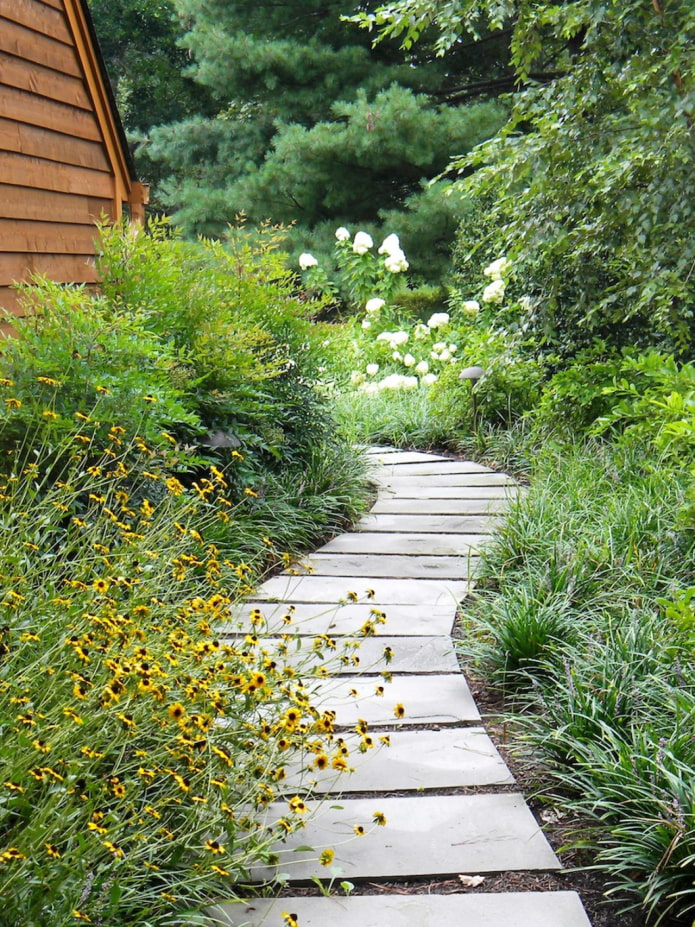
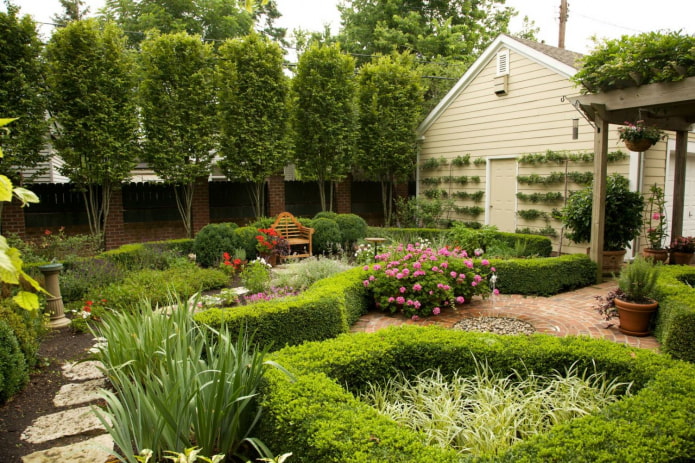
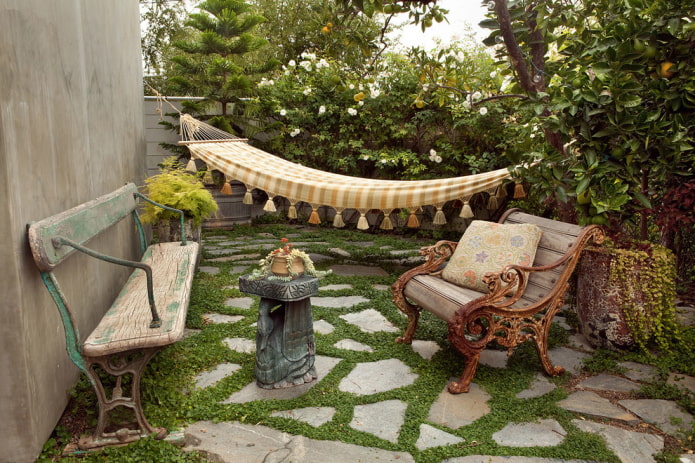
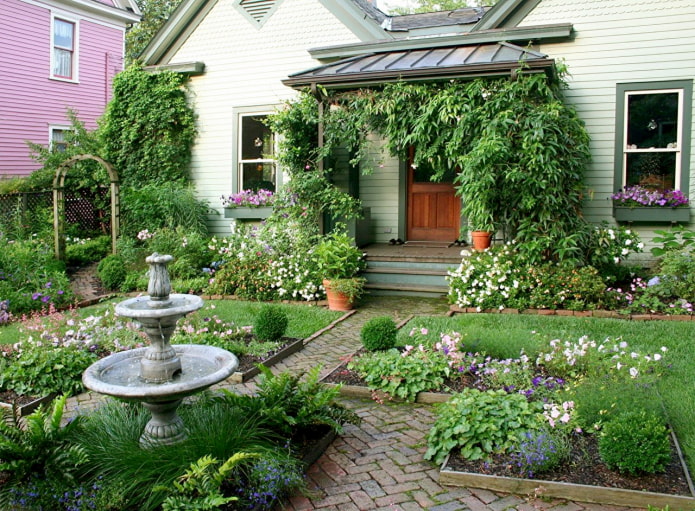
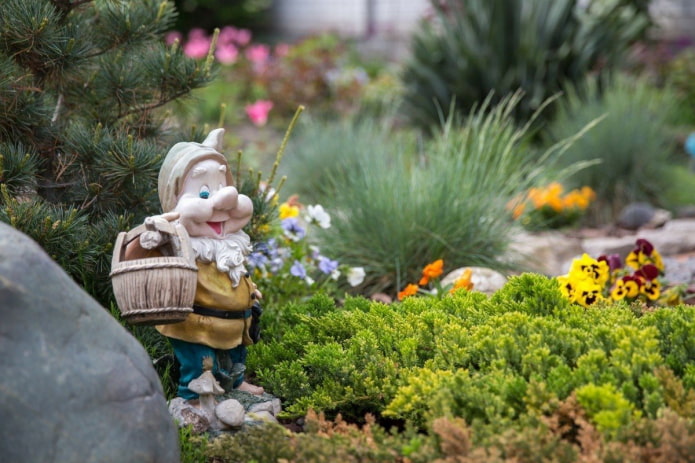
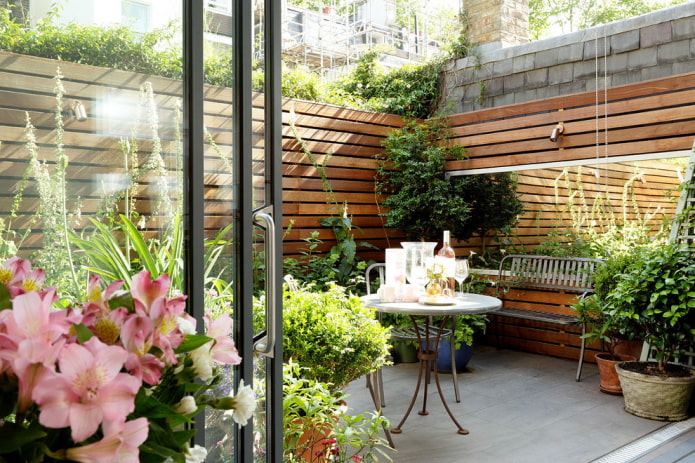

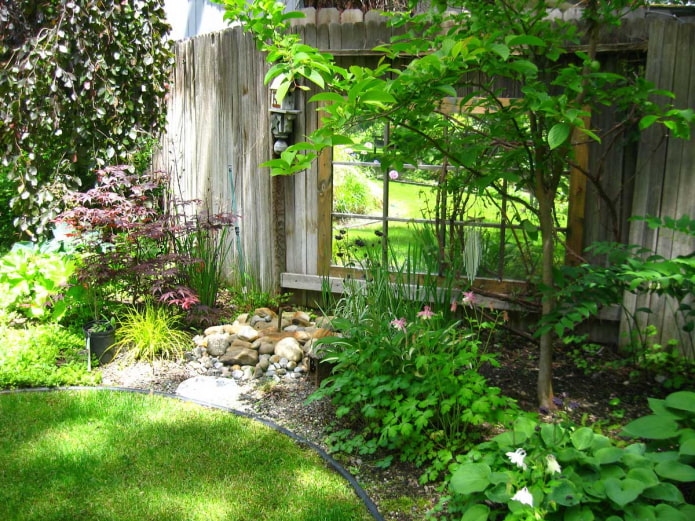
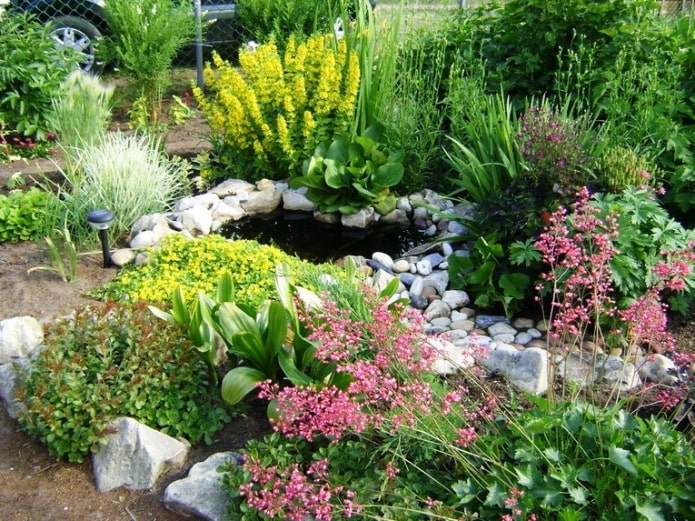
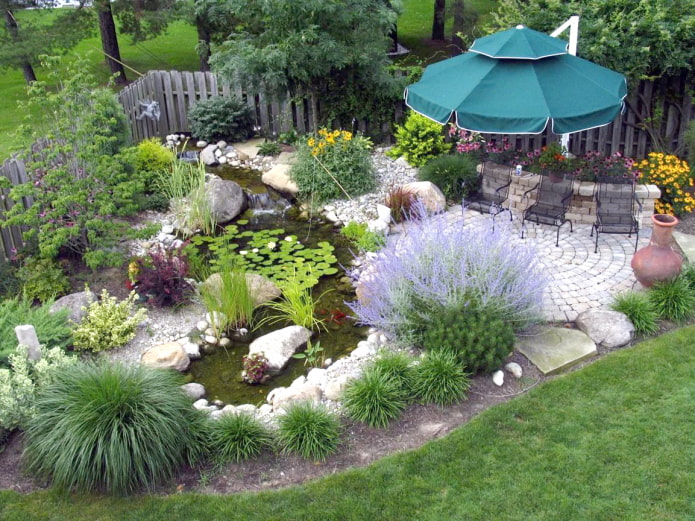

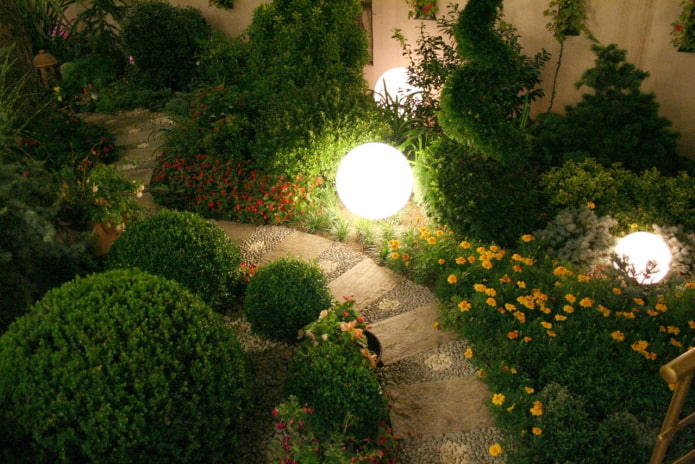
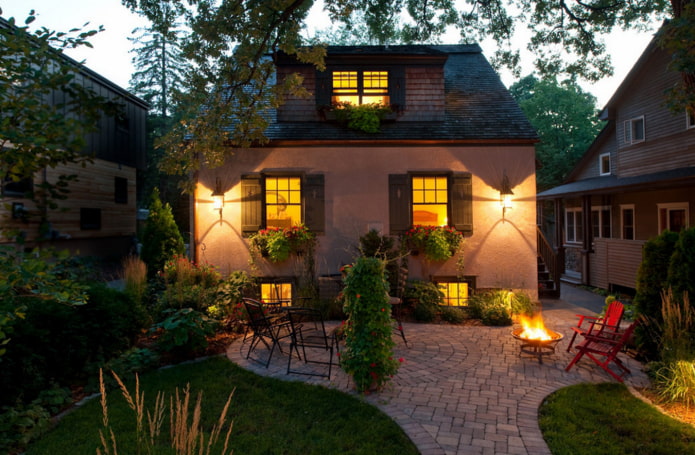

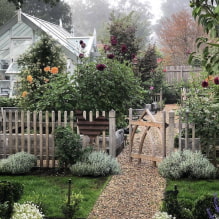
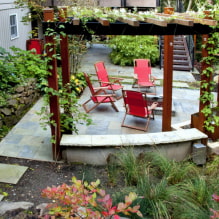
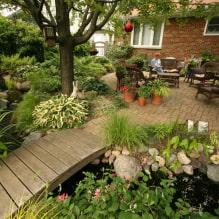
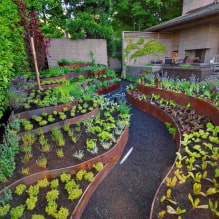

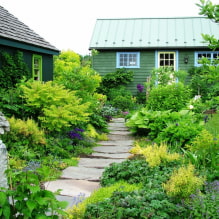
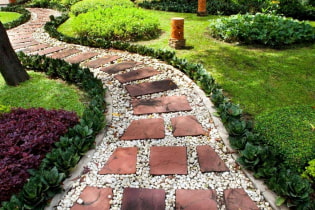 How to decorate garden paths beautifully for a summer residence?
How to decorate garden paths beautifully for a summer residence?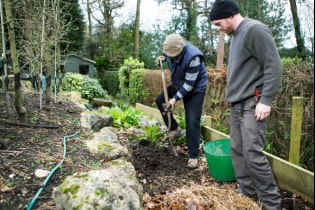 What fertilizers should be used in spring?
What fertilizers should be used in spring? How to use gabions on the site?
How to use gabions on the site?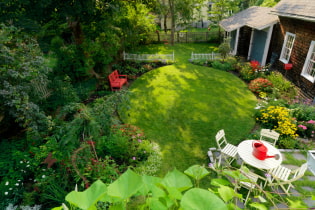 Landscaping of a summer cottage on 6 acres
Landscaping of a summer cottage on 6 acres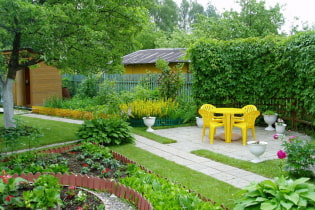 How to arrange the landscape design of a suburban area of 4 ares?
How to arrange the landscape design of a suburban area of 4 ares?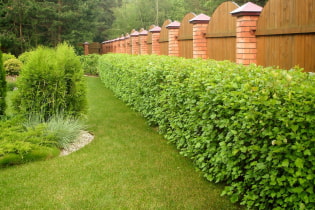 What plants can you make a hedge?
What plants can you make a hedge?